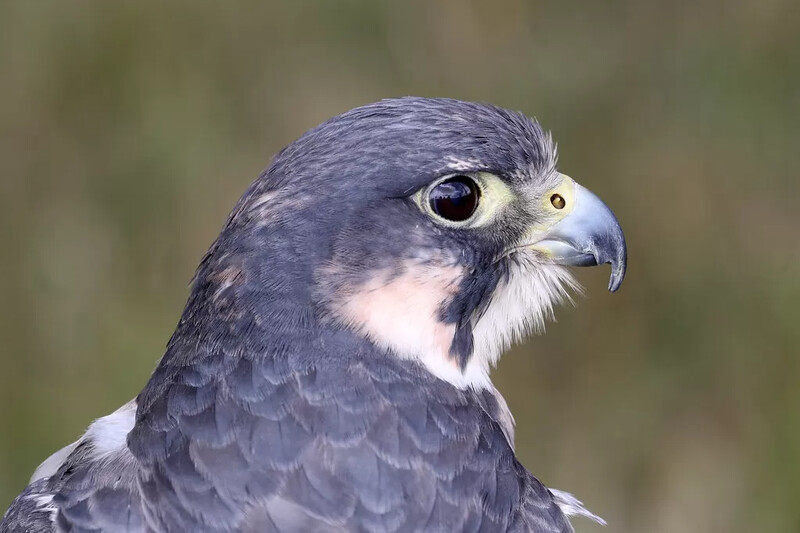Describe
The large falcon has a body length of 34 to 58 cm, a wingspan of 74 to 120 cm, and a weight ranging from 330 to 1500 g, with females about 30% larger than males.
The adult bird has long, stiff pointed wings, which help it to optimize its speed very well in flight as well as when diving from above.

Big Falcon – Photo by: Brian Ratcliff
The beak and sharp, curved black talons. In addition, the upper beak has a sharp “tooth”-like notch near the tip, which is considered an adaptation that allows the Great Cutter to kill its prey by biting off the cervical spine.
What does the Great Falcon eat?
The diet of this bird consists mainly of medium-sized birds, but sometimes it also hunts small mammals or reptiles, or even insects.
In urban areas, the prey of large falcons is pigeons or starlings. Unlike other birds of prey, falcons rarely hunt, but they still hunt small mice, hares and squirrels if caught.
Big falcon is the fastest bird on the planet
The great falcon usually hunts most strongly at dawn or dusk, when prey is most active, but it also hunts at night in cities, or at sea during the migration season. .
Large shears require an open space to hunt, and so they often hunt on water, swamps, valleys, fields, and even tundra areas. They can spot prey from a high place with good visibility, or from the air.
In the air, there will be no room for predators to hide and stalk, so to successfully make a surprise raid on any bird in flight, speed is almost a factor. decision.
To hunt, large falcons are forced to fly high and keep a certain distance to avoid being detected by their prey. Possessing an extremely good eye should cut large quite easily when tracking prey from above.
When the time comes, it quickly turns its body downwards and plummets down. As mentioned, when launched from above, it is the fastest bird on the planet. 389 km/h is the known speed of this bird. This dive almost turns the large falcon into an aerodynamic missile that targets its prey.
When it is close to the target, it spreads its wings to reduce its speed, approaching its prey with the most accuracy. Possesses strong and razor-sharp claws, making it easy to catch prey. When it catches its prey, it will use one leg to squeeze, stunning the animal or killing the prey in flight.
When diving at such a speed this can damage their lungs, or simply put at high speed, will create a great pressure on its face, and can cause it to die. suffocated.
However, small bony tubes on the nostrils can direct strong airflow out of the nostrils, making it easier for the bird to breathe. Also, to protect the eyes, the great falcon uses a membrane known as the third eyelid, to maintain vision.

Big Falcon – Photo by: Roger Wasley
When its prey is too heavy to carry, the big cut simply rushes to impact the animal with its sharp claws causing the prey to fall, then it quickly rushes to the ground to enjoy the meal. eat. Before starting to eat, its prey will be plucked out.
If the initial attack on the prey is unsuccessful, it will quickly give chase, the chase can last up to several minutes, however once the prey is attacked by adept adult falcons, prey has little chance of escape.
I appreciate you taking the time to read this post from Ideassimple. I hope you learn a lot about nature. Please leave a comment or share our article if you think it insightful and interesting. Thank you very much!











